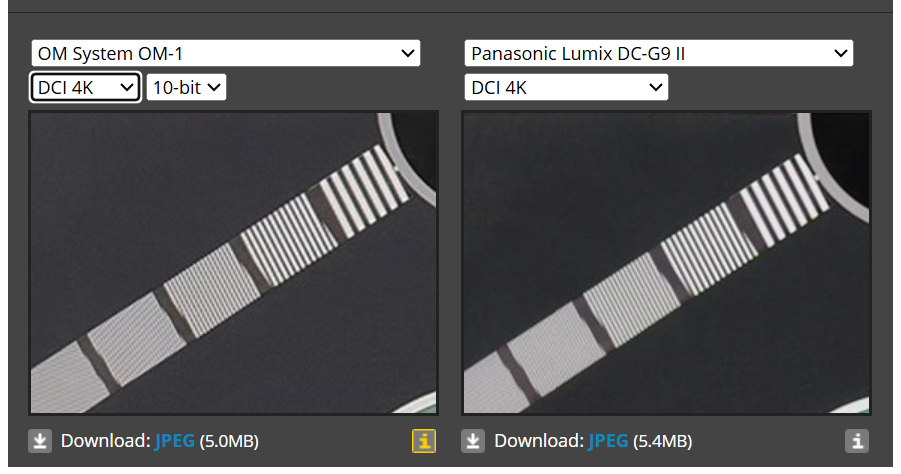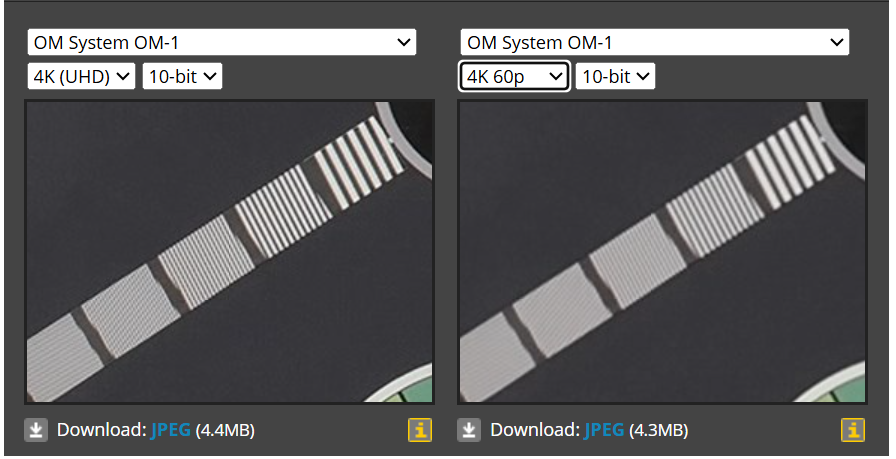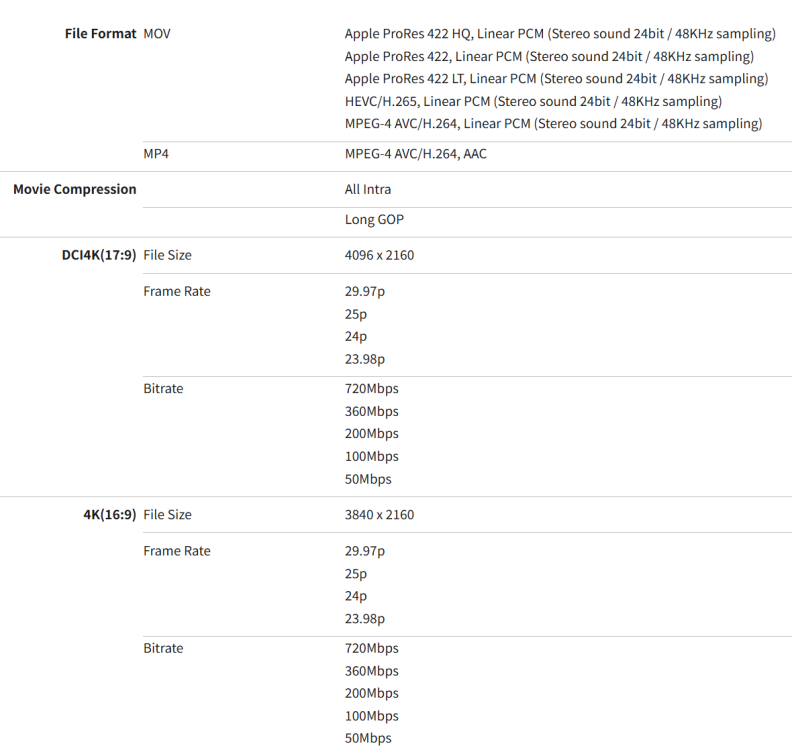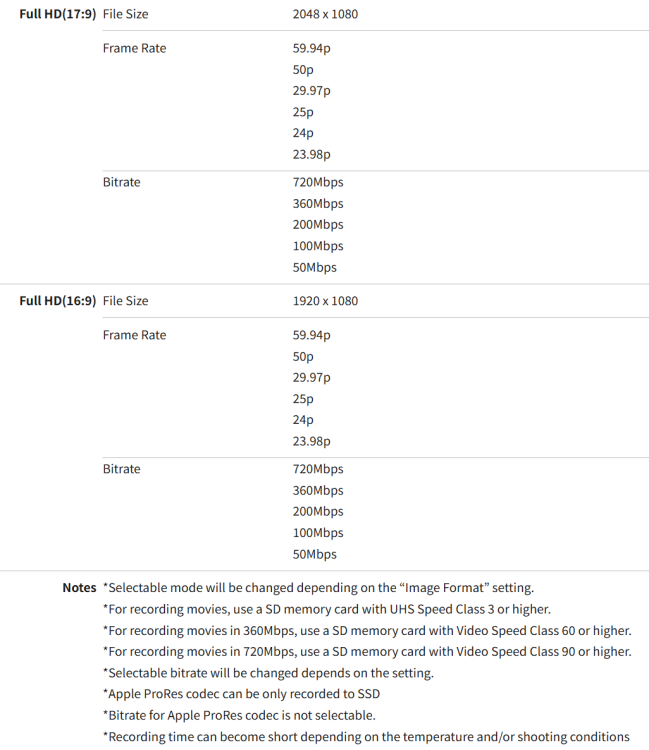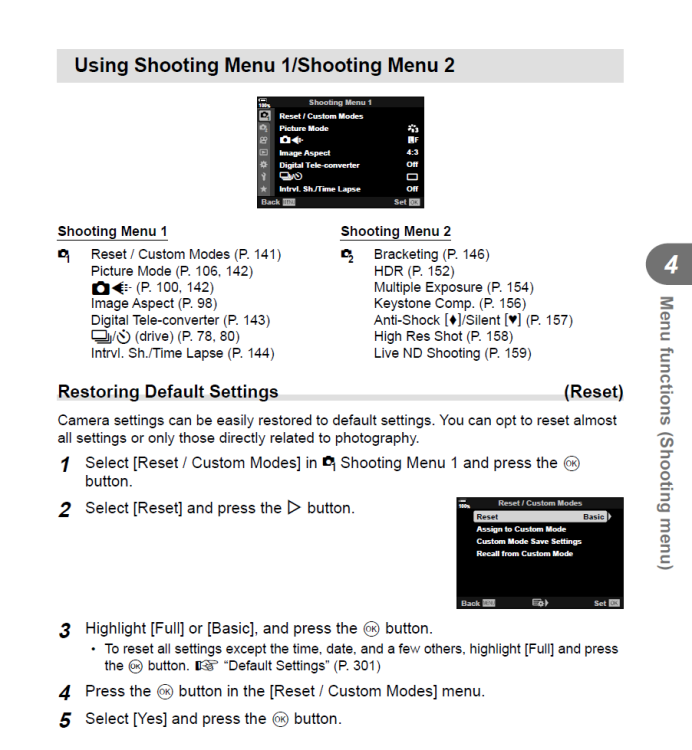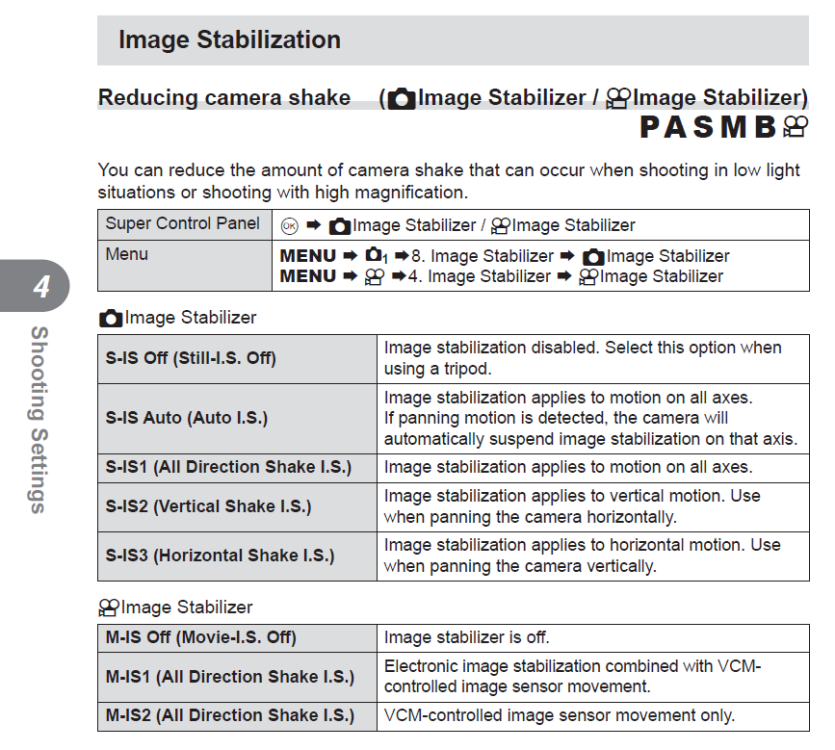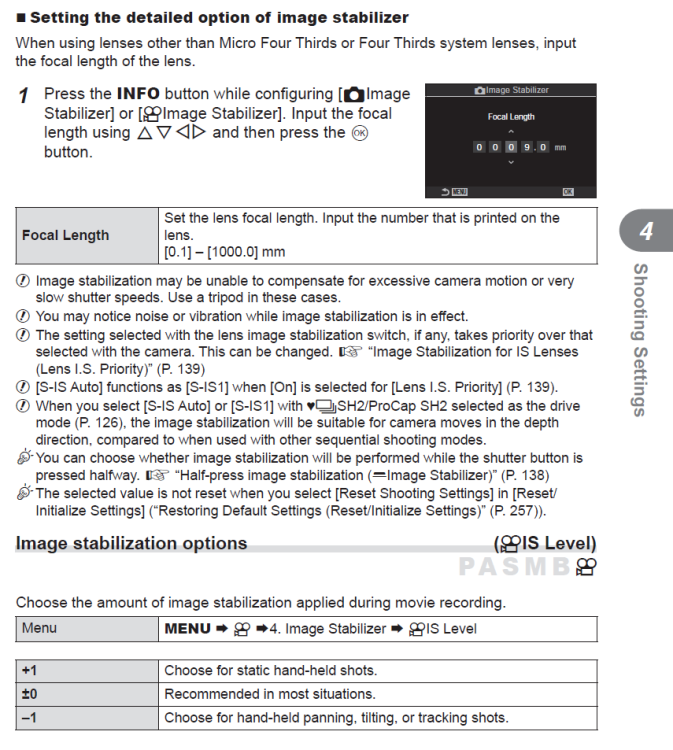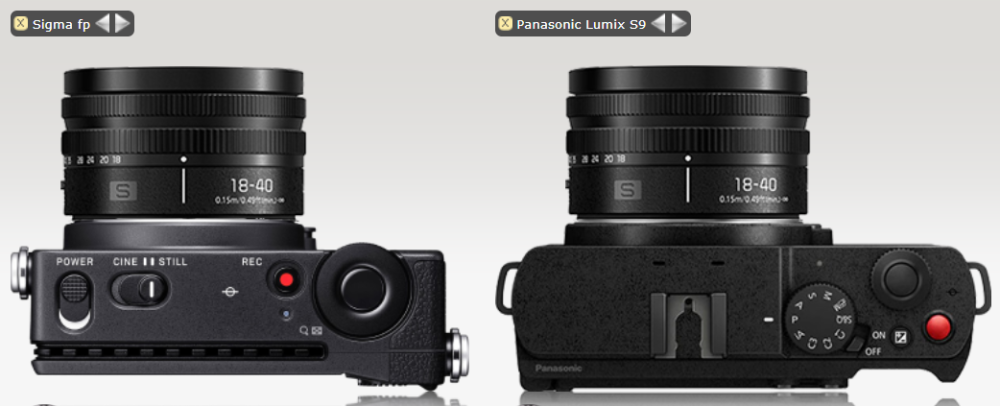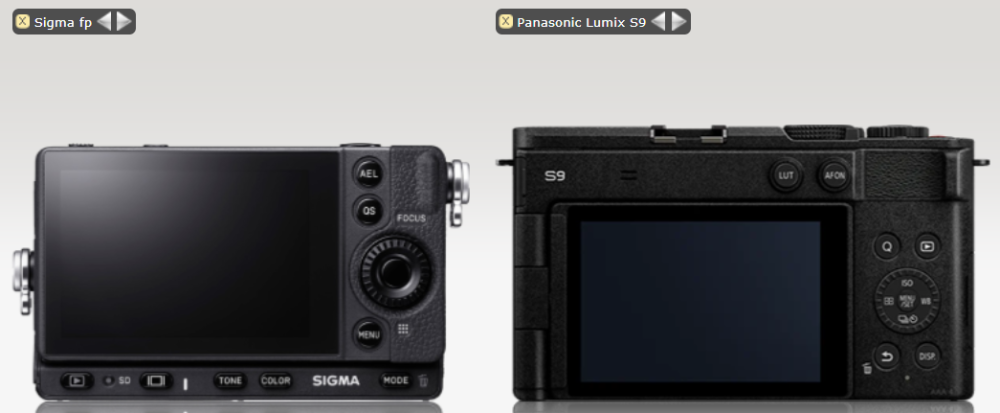
ac6000cw
Members-
Posts
645 -
Joined
-
Last visited
Content Type
Profiles
Forums
Articles
Everything posted by ac6000cw
-
The OM-1's strength is as a good handling, relatively light weight, handheld run-and-gun camera with very low rolling shutter. and decent AF. I think it's video quality is more than good enough for that kind of use (which is basically what I use it for), but TBH I don't think it's a camera you'd choose to put on a tripod and shoot a feature film with.
-
I've found that in video C-AF, if a lens is stopped down to a small aperture, the OM-1 (and the E-M1 ii/iii) will sometimes decide it's not quite in focus and pulse it to check. If the lens has low focus breathing it's often not noticeable as the depth-of-field at small apertures hides it. But it means lenses with low focus breathing are a good idea if using C-AF in video. Oly/OMS cameras don't have an AF-lock function, but you can assign the MF (manual focus) function to a button, which basically does the same thing (provided you don't touch the lens focus ring!). Also the AF-ON button can be used to force a re-focus in both C-AF and MF modes. So in MF mode, pushing AF-ON to get initial focus then tweaking it with the lens focus ring if necessary is easy. What video 'IS Level' are you using (-1, 0, +1) and is this in M-IS 1 (with digital) or M-IS 2 (sensor shift only) mode? At the +1 setting it will be jerky if you move it too fast (It's intended for static hand-held situations), but -1 and 0 settings should be OK for normal movement (in my experience).
-
In pictures of the bottom of the FX30, it doesn't look like it has a cable hole for a dummy battery. AFAIK the FX30 can be powered over USB-C from a PD-capable charger or power bank (the manual states 9V at 2A is the minimum spec). Otherwise just buy some more batteries. As MrSMW suggested, if you choose carefully (in my experience) decent 3rd-party batteries can be almost as good as the OEM ones and are normally much cheaper (but avoid the really cheap ones - they are cheap for a reason...).
-
Nikon would doubtless say you should buy one of our more expensive cameras with a CF Express Type B card slot... This is a low-cost camera (in today's full-frame market), so I'm not surprised it's limited to UHS-II SD cards.
-
I agree the low-contrast/low-saturation look seems to be fashionable at the moment - and I don't like it either. It's not accidental that the 'standard' settings of cameras (and TVs) usually have relatively high contrast and saturation - it makes the images look attractive and eye-catching. What sort of film would 'The Third Man' be without its high-contrast monochrome imagery, or 'Goldfinger' without the glitzy look? Out of interest, was the choice of GH7 versus the 'sister' smaller and lighter G9ii down to the internal 4k ProRes recording and fan cooling/longer recording times on the GH7?
-
Where is this sensor performance data coming from? It looks like you're quoting it from a website somewhere.
-
It means 'SuperSpeed' i.e. USB3 at 5 or 10 Gbit/s (the plastic parts of the connectors are also often colored blue). For reference 'High Speed' USB is 480 Mbit/s and 'Full Speed' USB is 12 Mbit/s. Note that while some USB-C connectors and cables support 'SuperSpeed', not all do (cheap cables in particular often don't support more than 480 Mbit/s). The 'SuperSpeed' connection uses separate wires in the cable, and it's cheaper to leave them out. So if buying a cable, check carefully that it supports SuperSpeed (5 or 10 Gbit/s) data rates if you need them. In my experience, most PC/Laptop USB-C ports are SuperSpeed-capable but peripheral devices to plug into them are a complete mixture of speed capability. Personally, no, but I almost always buy Sandisk or Samsung, and always 'sold by Amazon' i.e. not from marketplace sellers. I've never needed to buy a UHS-2 card, so no advice on that.
-
From dpreview's video test chart, OM-1 vs G9ii (both at 24p/25p/30p) - they are very close on resolution/sharpness: ....but on OM-1 is 50p/60p much softer than 24p/25p/30p - note the softness of the middle bar at 60p vs 24p/25p/30p : Those test results match what I've found when using the OM-1 for real-world video.
-
It is - provided you hold the camera reasonably still, otherwise you get jerks if you move it too fast. It's the mode I normally use for wildlife video with that lens. The extra crop that digital stabilization adds is actually useful in that situation too.
-
Yes, probably more than you really need - and sometimes several ways of doing the same thing (but annoyingly there are a few things that would be really useful to assign to a camera function button but you can't...). Photo and Movie modes are (mostly) separate worlds, including the function button settings.
-
If anyone is interested, this is a comparison I did of various OM-1 IBIS settings and Panasonic 'Power OIS' lens stabilization. All handheld, all C4K@50p video, using Panasonic 100-300mm f4.0-5.6 II lens at 100mm and 300mm. I was standing still, the camera was handheld, using the EVF, with my left hand underneath the lens and right hand holding the camera body.
-
It's also got a 4-stop ND filter:
-
-
From the press release on dpreview: ...and from the Fuji product page:
-
AFAIK, after a 'full reset' of the settings (see 'Shooting menu 1 -> Reset/Custom modes -> Reset -> Full), it defaults to using card slot 1 for everything. As this is a used camera, I'd recommend doing a 'full reset' anyway - the options are so complicated that you don't want someone else's preferences to start from...
-
I feel the same about the ZV-1 - I bought it mainly as a pocket-sized video camera, but I'm actually liking the stills from it more (I find the video quality is a bit so-so). Turning it on/off by opening/closing the screen is a great time-saving idea. I'm also finding the S9 + 18-40 lens quite fun - the limited amount of buttons and dials (and no EVF) means there's fewer decisions to make, so it becomes more of a point-and-shoot experience (and in traditional Panasonic style, you can set it up to shoot basic shutter-priority video when using the record button in photo mode - no need to operate a photo/video switch first). Almost the perfect hybrid for me.
-
C4K/UHD 60p is softer on the OM-1 than 24/25/30p - see this dpreview video stills comparison Sharpest video modes are C4K/UHD at 24/25/30p 10-bit. Re. the IBIS performance - I don't own any manual lenses, so can't test the IBIS in that situation, but I often use non-stabilized long telephoto lenses like the Oly 75-300mm and Pana 100-300mm (with lens OIS turned off) for wildlife video. With the video stabilization 'IS Level' set to +1 (the highest setting) I can get usable handheld video at 300mm provided I'm leaning against something or sitting down to provide a bit of extra stability. Is the video stabilization working OK with native MFT lenses? If not, I'd suggest doing an 'Initialize All Settings' and starting again (especially if this is a used camera). Note that some of the stabilization settings are separate for stills and video, so you might need to set the manual lens focal length separately for stills and video:
-
After sitting on the fence for while, after the recent price reductions and a 'used - like new' deal popping up, I bought that combo. Handles rather like a slightly larger and heavier GX85, with much better video quality and C-AF - pretty much as I hoped/expected. That would be nice - but I suspect the more expensive S-series cams would get that first (if it happens at all).
-
I bought the S9 + 18-40mm kit as a 'used - like new' deal recently in the UK for about £1100 (including 20% sales tax). With the recent price reductions that kit is only £1299 brand new (and only £150 more than the body alone). Quite liking it so far, feels very solid in the hand and the lack of a front grip isn't as much of a problem as I thought it might be. Pretty good value (at the current pricing) for what you get, I think.
-
...and in L-mount, there's always the Pana S9 - not much larger and heavier than the Fp (both fitted with the Pana 18-40mm collapsible zoom below) - and you get IBIS too:
-
I think pretty much any sector on social media (unless it's very, very niche) is going to be saturated with content. All you can really do is make your content as interesting and easy to watch as possible. If you are going to be on-camera and/or talking to the audience it'll probably take lots of practice and time to develop your 'presentation style' unless you have a natural talent for it. Those things are far more important than small differences in picture quality between cameras etc. that your viewers won't notice. Don't over-think the hardware side of things and buy extra stuff that you think you *might* need (and then waste time working out how to use it) - the KISS principle.
-
I agree, and a decent U3/V30 rated SDXC card can handle 200 Mbit/s (25 Mbyte/s) no problem, which is very high bitrate for long-GOP HEVC and should be pretty much transparent video quality. I've been using relatively cheap 128GB or 256GB Sandisk Extreme or Samsung Pro Plus UHS-1 U3/V30 cards for years (both rated for over 100 Mbyte/s write speeds by their manufacturers).
-
I had a play with an OM-3 a few days ago. I found it uncomfortable to hold, mostly because there's no grip and some of my fingers ended up resting/rubbing on the front dial. With the 12-40mm F2.8 lens on it, the lack of grip etc. for my right hand meant far more of the weight had to be supported by my left hand and arm which got uncomfortable after a while. Also the 'record' button is very close to the nearest dial, so my finger was rubbing against the knurled edge of the dial every time I pressed it. It's too much of a compromise of style over ergonomics for me to be interested. Honestly I think the internals of the OM-1 in an OM-5/E-M5 iii style body would be a more attractive and usable camera, even if the overall size had to increase a bit over those.
-
Just watched it - some quite interesting development background stuff, e.g. how the 'cropless' stabilization works.
-
It does have active cooling (AFAIK the same system as used on the S5 ii). But it's having to deal with a lot more heat due to almost 2x the data rates if reading the full sensor area (compared to the S5 ii), and 8K video is 4x the pixels per frame vs. 4K video so the processing and encoding pipeline is working much harder. Based on the review comments and RS results, the less-than-8k video is oversampled from 8k capture, so probably great quality but a lot of heat to deal with (and short battery life).


